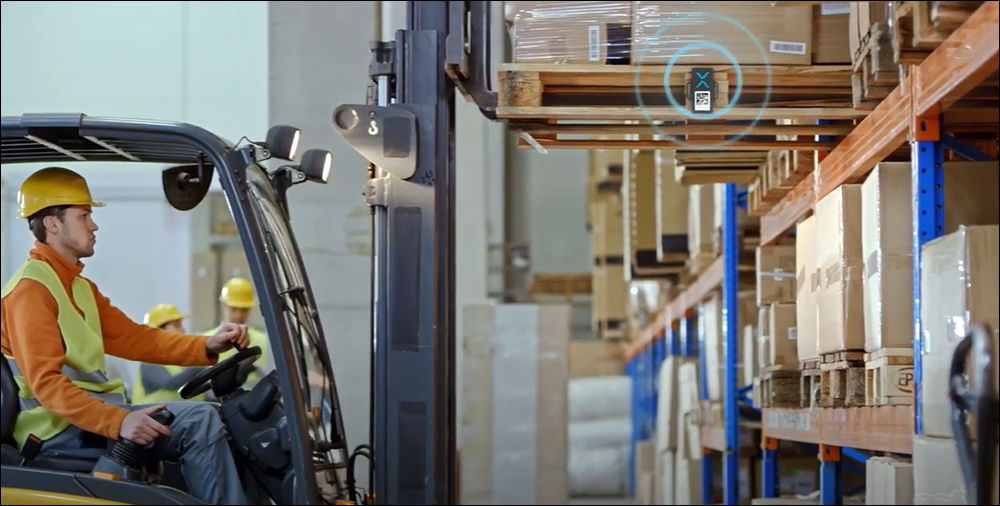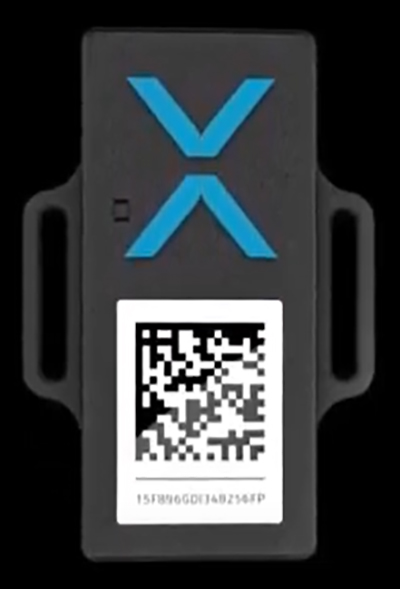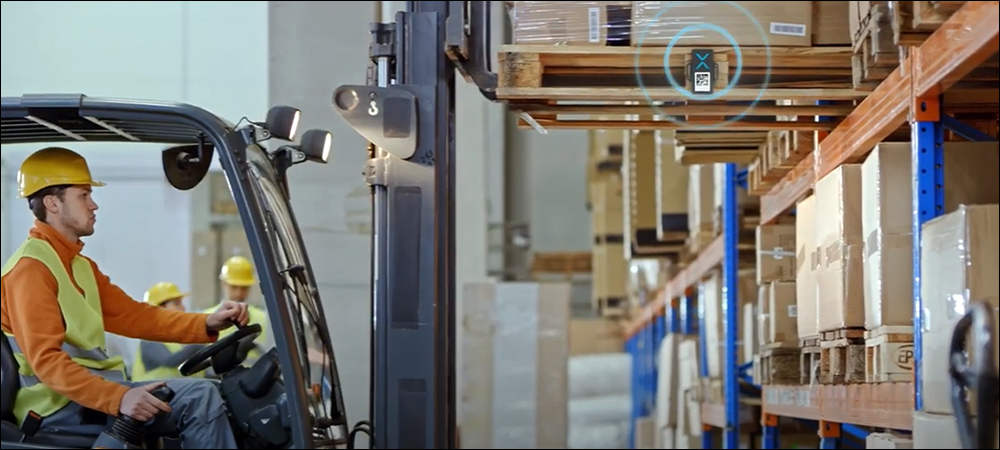Localization technology company Kinexon has released a new ultra-wideband (UWB) tag that is intended to be affordable for large-scale real-time location systems (RTLS). The X-Tag, which has been in development to enable smart factory and warehousing applications with short paybacks, is expected to provide a 50 percent higher return on investment (ROI) than other UWB solutions, the company reports.
The real-time intelligence company provides location solutions for material flow management, tool management, worker safety and sports analytics (see Swiss Manufacturer Employs Contact Tracing with UWB Devices). One of its missions since its founding, says Mehdi Bentanfous, Kinexon’s CEO for the Americas, has been to make UWB RTLS solutions affordable enough that tracking goods would be ubiquitous, rather than limited to a small number of high-value items.

Companies have been applying X-Tags to reusable carriers, parts, final products, single-use boxes and pallets.
Traditionally, Bentanfous says, UWB has worked well at providing highly precise location data in real time for such items. The battery-powered UWB tags transmit data to anchors deployed around a facility, which can then enable a system to identify where they are located within a factory, an industrial site or a sports arena within a very specific area. For lower-value items, however, a precise but costly tag (averaging about $100 apiece) is not realistic.
“The challenge,” Bentanfous states, “has been ‘What is my ROI? Is it affordable?'” As a result, many companies have instead deployed Bluetooth Low Energy (BLE) or RFID solutions for low-value goods or other items being tracked. That approach has limitations, though, since such technologies cannot offer the precise real-time location that an active RTLS solution like UWB can. Another approach commonly employed by manufacturers is to track a few hundred high-value items in real time, such as tools or vehicles, or to monitor staff members, with lower-value items simply not tracked.
Many manufacturers are now seeking to transform their facilities into smart factories in which the physical and digital worlds are connected, which requires connectivity. “Companies are interested in digitizing and automating processes, and for that you need location data about everything moving on the shop floor,” Bentanfous says. “Machines are digitized, but the things moving on the floor can be more challenging to connect.”

The X-Tag
According to Bentanfous, the new X-Tag is based on less material and a “smarter design focusing on the most relevant components,” including the housing and chip inside it. “That was only possible by adjusting our algorithm to keep precision at the same level,” he explains. “The goal was to improve the tag design to offer it at a lower cost, while keeping the same level of precision and optimize its industrial grade quality.”
Kinexon put the X-Tag through a design-for-manufacturability update, Bentanfous says, thereby creating a smaller, more intelligent design than that of predecessor UWB tags, and with improved industrial suitability. “The key to our innovation is the powerful IoT [Internet of Things] software we’re deploying,” he states. “[Kinexon’s] RIoT software has the unique ability to process large amounts of UWB data that can be leveraged for location-based automation.”
The low-cost tag is a culmination of the company’s ongoing efforts to make UWB affordable for wide-scale use, Bentanfous reports. “From the beginning,” he says, “when we founded Kinexon, the idea was how to provide affordable, cost-efficient technology with reliability and accuracy.” The firm’s long-term plan is to enable UWB to connect to anything and everything on a factory floor. “It’s a big deal for us, having developed a solution that can get location on anything moving in high volume.” In a factory, for instance, the tags could be applied to parts and supplies used to build a product, now with a single system.
Several manufacturers began integrating the X-Tag into their UWB track-and-trace solutions in the spring of this year, and more rollouts are now underway. Automotive supplier Continental Automotive, for instance, has been employing the new tags at its German facility to expand what can be tracked via its existing UWB solution. Another large implementation is taking place with a German aerospace company, Bentanfous says, which has asked to remain unnamed.
The most common use cases are in material flow optimization and assembly automation, Bentanfous notes. The system can be used for real-time search-and-find processes, such as for tools or components, as well as in automation manufacturing, since it enables users to know the precise location of equipment and products during assembly. The UWB solution can also leverage real-time data for the optimization of complex processes. For example, the system could immediately identify where the movements of goods or individuals slow down in specific areas, as well as help manufacturers adjust to a more efficient workspace layout.

Mehdi Bentanfous
To date, several companies have been applying the X-Tags to reusable carriers, parts, final products, single-use boxes and pallets. UWB receivers can capture data from hundreds or thousands of X-Tags within close proximity of each other, depending on the physical size of a shop floor or warehouse, as well as the tags’ transmission rate. These, Bentanfous says, are the main determinants of how many tags can run at the same time.
Kinexon’s IoT software platform can capture information regarding everything moving on the shop floor and create a digital twin. The platform can also accommodate other tracking technologies such as GPS, thus providing a single solution for the seamless integration of all the different locating technologies the supply chains use. In that way, individuals, vehicles and inventory can be detected and traced both outdoors via GPS, as well as indoors with UWB.
The IP67-rated X-Tag is the latest product in Kinexon’s portfolio. It typically can be located within 10 centimeters (3.9 inches), depending on the environment, and it replaces its predecessor, the Asset Tag, joining such products as the Vehicle Tag, the ePaper Tag with display for paper-less tracking, and the Worker Tag worn by personnel.
The tag measures 60 millimeters by 43 millimeters by 12 millimeters (2 inches by 1.7 inches by 0.5 inch). It can be refurbished and it has a replaceable battery with up to a five-year lifespan depending on usage, after which it is typically recycled. The tag is designed to be easily mounted, Bentanfous says, or to be dismounted from an object for multiple uses.
The X-Tag’s cost starts at around $18 apiece on average and is available on a two-year subscription basis. The monthly fee would be about 85 cents per tag, which Kinexon claims is up to 90 percent less than the price of standard tags. Kinexon is currently in discussions with both new and existing customers to implement the new tags, Bentanfous says. The tags can be introduced into existing UWB solutions in a cost-efficient way, he adds, since the infrastructure is already in place.


